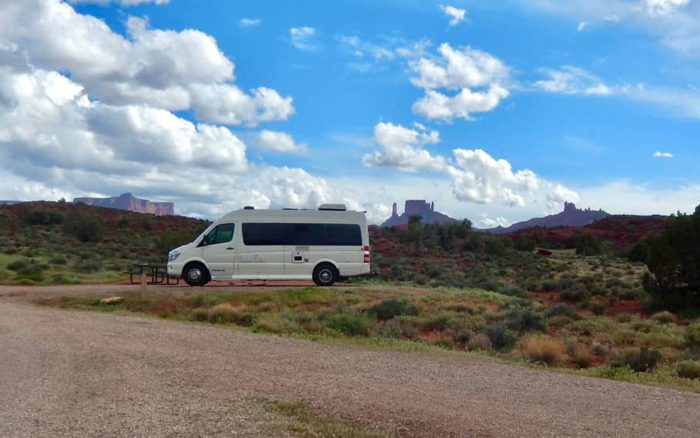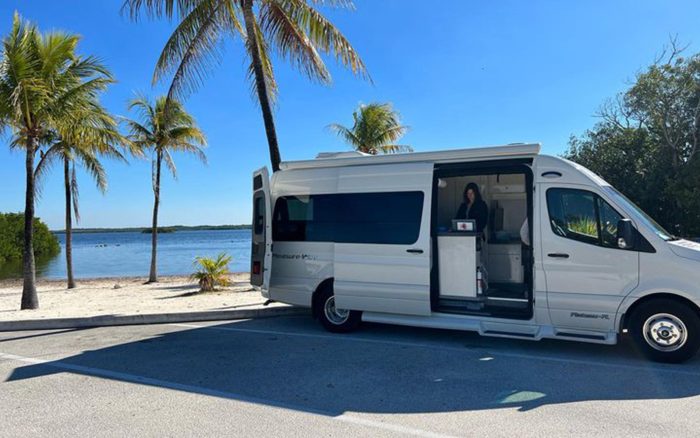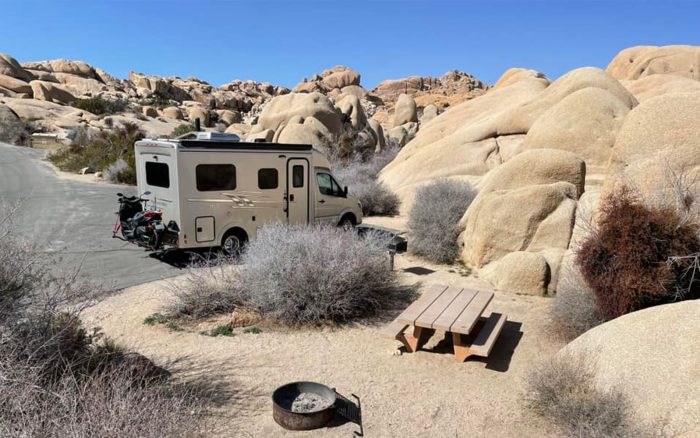PW on the Map – Washington Travel Guide
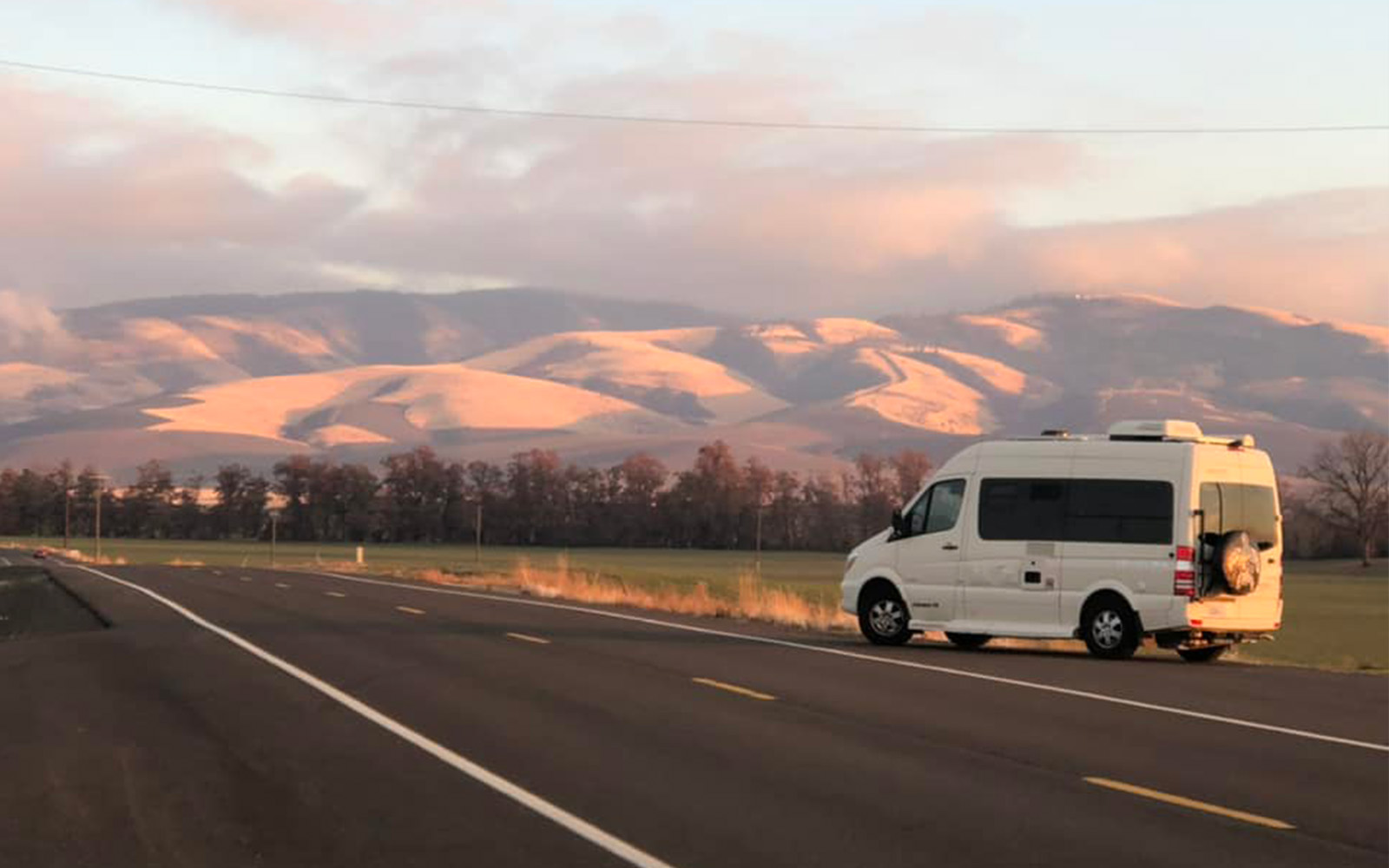
An RV trip to Washington is an unforgettable experience! The Pacific Northwest has breathtaking mountains, exciting and interesting cities, and lots of untouched forests for exploring. Whether you’re heading on a summer road trip, a fall foliage tour, or a road trip across the Staes, you will surely make memories in the Evergreen State!
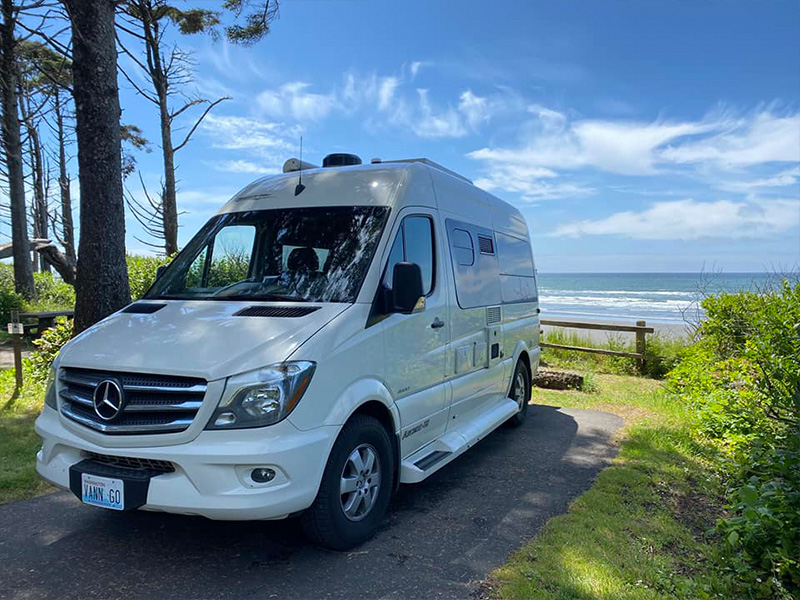
Considerations for Washington
Washington is infamous for its rainy weather, and you’ll want to make sure you have plenty of waterproof gear, especially if you’re visiting from October to March. You’ll want to be careful of wet roads and drive carefully to avoid sliding or hydroplaning.
RV specific rules vary from state to state, and Washington is no different. The maximum width your RV can be in Washington is 102 inches, the maximum length is 46 feet, and the maximum height is 14 feet. Pleasure-Way motorhomes do not exceed any of these specs. All RV’s must have flares or reflective signs, fire extinguishers, and safety chains in Washington.
You have lots of choices of where to camp in Washington! Begin your planning by thinking about where you want to visit in the state. Washington has three national parks, several large cities, sports teams including the Seahawks and the Kraken, and lots of places for outdoor adventures. You have lots of choices of where to camp in Washington! Begin your planning by thinking about where you want to visit in the state. Washington has three national parks, several large cities, sports teams including the Seahawks and the Kraken, and lots of places for outdoor adventures.
Mount Rainier National Park
Looming above the Seattle skyline, Mount Rainier is one of Washington’s most iconic landmarks. Standing at 14,410 feet, Mount Rainier is both an active volcano and the most glaciated peak in the continental United States. While Mount Rainier is the centrepiece of Mount Rainier National Park, its lower slopes are filled with old-growth forests and meadows filled with wildflowers. There are plenty of hiking trails to navigate, lots of places to eat, and plenty of sightseeing opportunities. There are three campgrounds within the park, Cougar Rock, Ohanapecosh, and White River, that allow RV campers. Reserve sites at Cougar Rock and Ohanapecosh Rock Campgrounds on Recreation.gov. White River Campground is first come, first served only.
Pets are permitted in the campgrounds, but must be caged, on a leash no longer than six feet, or otherwise restrained. They cannot be left unattended or allowed in ampitheatres, buildings, on vegetated areas, or trails. Take your pets to the Longmire Historic District Walking Tour! At Mount Rainier, designers selected massive logs and glacial boulders as the building materials best suited for integrating new structures with their natural settings. This style of architecture, known as “National Park Service Rustic”, can be seen throughout the Longmire District on this walking tour.

North Cascades National Park
Less than three hours from Seattle, an alpine landscape beckons. Discover communities of life adapted to moisture in the west and recurring fire in the east. Explore jagged peaks crowned by more than 300 glaciers. Listen to cascading waters in forested valleys. Witness a landscape sensitive to the Earth’s changing climate. Help steward the ecological heart of the Cascades. Campgrounds within the park include Newhalen Creek Campground, Goodell Creek Campground, Colonial Creek North Campground, and Colonial Creek South Campground.
Stehekin Valley
The name “Stehekin” is based on a Salishan word meaning “the way through” or “turning around place” in Lushootseed (Coast Salish) and “mountain tops” in nxa’amxcin (Interior Salish)
The Stehekin Valley has long served as a passageway for travelers, linking Washington’s interior wilderness to the rugged Cascade Mountains. Today Stehekin offers vistors an escape from the hustle of the modern day world. Nestled at the headwaters of Lake Chelan, the third deepest lake in the United States, the Stehekin community lives life a little slower.
There are no roads into Stehekin. Connected to the outside world only by foot, boat or plane, the voyage to Stehekin is part of the experience and once you’ve arrived, a variety of historical, cultural, and outdoor activities will connect you with the majestic surroundings. Stehekin serves as a hub to explore the 61,949-acre Lake Chelan National Recreation Area and a gateway to the rest of the North Cascades National Park Service Complex, Stephen Mather Wilderness, and adjacent National Forest Wilderness Areas.
Things to Note:
- Make lodging reservations before arriving in Stehekin. The North Cascades Lodge at Stehekin, the Stehekin campgrounds, backcountry camps, and most private lodgings require advance reservations, especially from May to September.
- There is no cell phone reception. A public phone is located near the landing.
- There are limited grocery and food services available in the summer and none in the off-season. With limited trash services, consider Pack It In/Pack It Out.
- There are no ATM services available in the valley. Many businesses accept credit card, but some do not.
Safety in North Cascades National Park
Many people go to the North Cascades to enjoy its rugged beauty and remote wildness. Recreating in natural areas, however, has inherent dangers and responsibilities. Conditions in mountainous areas can change very rapidly, even during a day trip. These travel tips can help you have a safe and responsible journey so that you, and future travelers, can enjoy the landscape to its fullest.
- Use caution on access roads: watch for obstructions such as rocks, sudden bends, and parked vehicles/pedestrians.
- Break-ins are not uncommon at trailheads along State Route 20. Remove your valuables and electronics and take associated electronic cords.
- Carry the ten essentials.
- Stay on trails. Wear adequate footwear and use a topographic map/compass.
- Report down trees or washouts to the nearest ranger station.
- Do not depend on cell phones as there are many ‘dead spots’.
- Always tell a friend your travel plans including destination and expected return time.
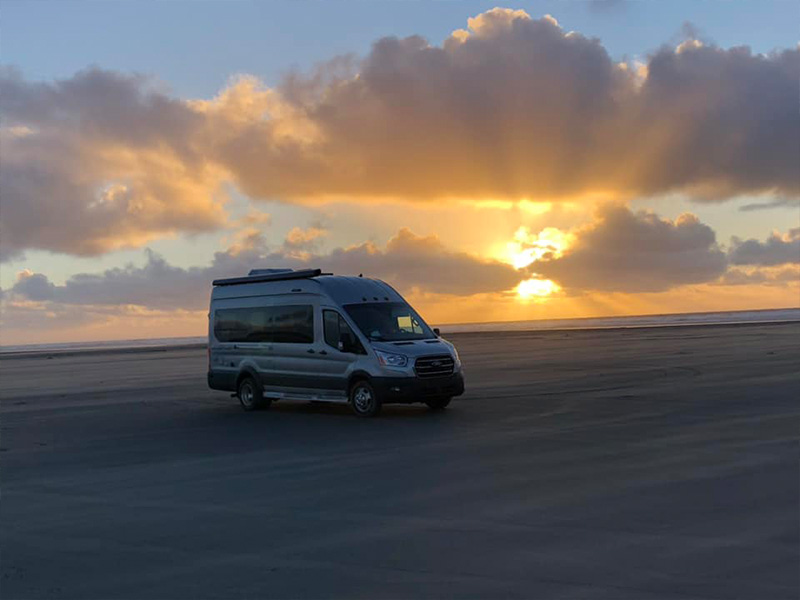
Olympic National Park
With its incredible range of precipitation and elevation, diversity is the hallmark of Olympic National Park. Encompassing nearly a million acres, the park protects a vast wilderness, thousands of years of human history, and several distinctly different ecosystems, including glacier-capped mountains, old-growth temperate rainforests, and over 70 miles of wild coastline.
Camping in Olympic National Park
Log Cabin Resort offers a variety of campsites including RV sites, group tent camping (4 tent pads), bike-in tent sites, and ADA tent sites.
Other amenities include restaurant, deli, boat rentals (paddle boats, stand up paddleboards, canoes, kayak), coin operated washer/dryer, and general store (beer, wine, sandwiches, ice cream, candy, seasonal clothing items).
Reservations are required to camp at Log Cabin Resort.
Other campgrounds include Fairholme Campground, Hoh Rainforest Campground, Kalaloch, Mora, Sol Duc Hot Springs Resort, and Staircase Campground.
Pets in Olympic National Park
Pets are permitted on a leash (up to 6 feet long) in campgrounds, picnic areas and parking lots; Rialto Beach (for 1/2 mile to Ellen Creek) and the Kalaloch beaches; and Peabody Creek, Madison Falls and Spruce Railroad trails only. Pets are prohibited in park buildings, all other trails, and in the wilderness. Pet excrement must be collected and put in trash receptacles.
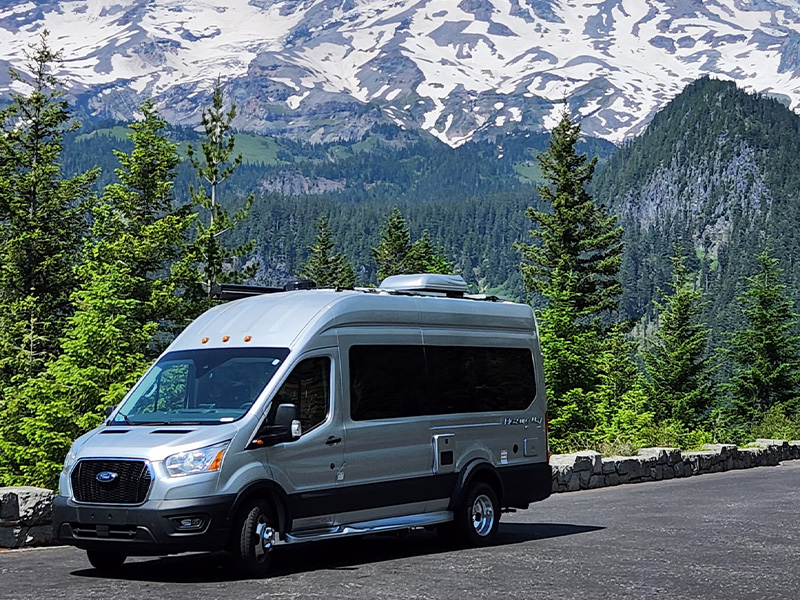
Planning Your Trip
Now that you have your RV and your campground lined up, it’s time to make solid plans on what you’re doing on your trip to Washington. You can visit urban areas like Bellingham, Seattle, or Spokane. You can visit the state’s natural areas. You can check out the Space Needle, or the Chihuly Garden and Glass with its gorgeous glass creations. No matter your interests, you’ll find something to do in Washington!
Features and Attractions in Washington
One of the best ways to see Washington is by driving a scenic byway! The Cascade Loop Scenic Byway winds from Puget Sound, through Leavenworth, to the Methow and Skagit Valleys and North Cascades National Park. The Cape Flattery Tribal Scenic Byway on the Makah Indian Reservation is the northernmost point in America. You’ll also want to hit up Washington’s famous landmarks. Snoqualmie Falls has observation decks and hikes to great places to view the falls. San Juan Island National Historic Park is off the coast of western Washington and is a great spot for whale watching. You might also want to visit Ebey’s Landing National Historical Reserve or the Klondike Gold Rush National Historical Park. Make sure you check out the hiking trails! Some of the best are Rattlesnake Ledge Trail, Wallace Falls via Woody Trail, Mount Storm King, Twin Falls Trail, and Sol Duc Falls Trail.
Festivals, Fairs, and Events in Washington
There are plenty of events that occur in Washington each year, and you may want to plan a camping trip around one of them! The Washington State Fair takes place in Puyallup each September. The Watershed Music Festival in George features multiple stages with live country bands and singers.
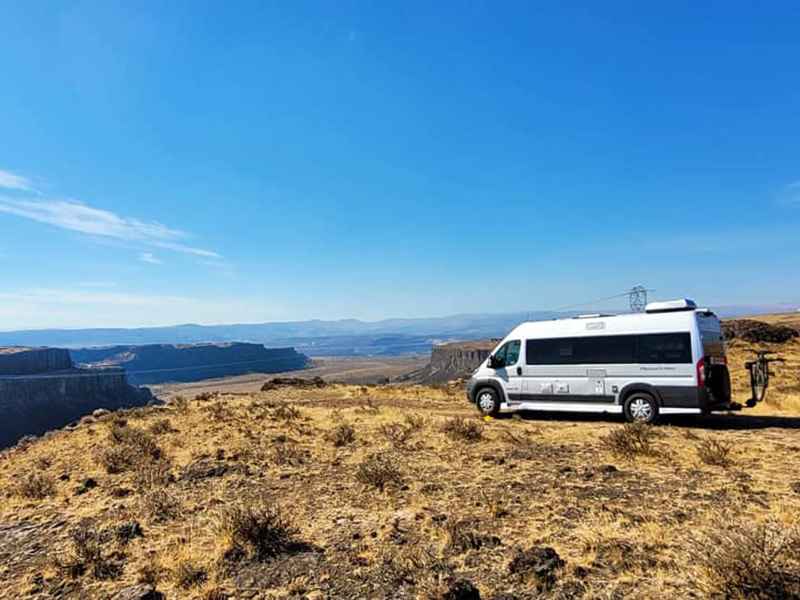
Weather & Wildlife Considerations
The natural disasters most likely to occur in Washington include flooding and severe storms with lightning or hail. Washington also gets earthquakes which are occasionally strong enough to cause damage. Finally, wildfires are another concern in many parts of the state.
Washington has lots of wildlife including bears, moose, elk, coyotes, bobcats, and smaller animals like otters and raccoons. If you’re near the coast, you might see seals or even whales and dolphins. If you’re hiking or camping in bear, moose, and other large-animal country, be sure to give them plenty of room. Use the thumb rule – hold your thumb an arm’s length away from you. If you can’t cover the animal completely with your thumb, you’re too close. Make noise as you hike to avoid scaring the animals. Back at your camp, be sure to put away any food and other scented items in a bear box or animal-safe container so you don’t attract animals at night. Don’t allow small children or pets to run ahead of you on the trail.
Honourable Mentions
Ebey’s Landing National Historical Reserve
Ice Age Floods National Geologic Trail
Wild Waves Theme & Water Park
Woodland Park Zoo
Point Defiance Zoo & Aquarium
Conboy National Wildlife Refuge
Featured image provided by Steve Zill.


